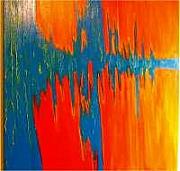 Sucking water out of parched land may not be the best move in an already-congested earthquake country — this afternoon, the Bay Area is apparently on the mend after Sunday’s 6.0 earthquake jarred the shit out of Napa, injured more than 100 people and tore-up some old buildings — at the estimated tune of $1 billion — but California is still, California: After the initial shock wore off, an almost festive air prevailed in the city with tourists on rented bicycles riding through closed streets. At one point so many people were sending photos from their mobile phones that cellular systems were overwhelmed.
Sucking water out of parched land may not be the best move in an already-congested earthquake country — this afternoon, the Bay Area is apparently on the mend after Sunday’s 6.0 earthquake jarred the shit out of Napa, injured more than 100 people and tore-up some old buildings — at the estimated tune of $1 billion — but California is still, California: After the initial shock wore off, an almost festive air prevailed in the city with tourists on rented bicycles riding through closed streets. At one point so many people were sending photos from their mobile phones that cellular systems were overwhelmed.
No festive air, though, is associated with them shakers.
(Illustration: ‘Earthquake,’ by Jakara Art, found here).
Of course, that’s the Napa Valley area, the wine motherlode of vineyard country. And a way-affluent spot of ground. A new system provided some warning. There was a 10-second alarm on the quake Sunday — a shitload of time in the context of nano-seconds of horrifying fear..
From The Verge:
The system works by leapfrogging the earthquake.
Sensors near fault lines detect the first sign of an earthquake — the faster moving but less destructive P-waves — calculate the severity of the quake, and broadcast a warning before the more destructive S-waves arrive.
That means that areas near the fault in Napa wouldn’t have gotten any warning, but the Bay Area could have received several seconds notice.
Depending on the region and the size of the quake, researchers at the United States Geologic Survey, which runs the program in collaboration with several universities, say it could give warnings up to a minute in advance.
It might not seem like much, but even a few seconds notice could allow utilities to shut off gas lines, elevators to let people off at the next floor, and trains to slow down.
The USGS cites the benefits a warning could give to a doctor in the middle of performing surgery.
In 2012, BART adopted an automatic braking system linked to the program, called Shake Alert.
Another quake-affiliated item that only caught my eye this morning — a story from three months ago, though at the time I missed it somehow: In a geophysical study published online in Nature May 24, the drought here in California, and wherever the many-other droughts might be, is forcing a mass-draining of groundwater, which in turn, makes weird shit happen to the ground. In some brainic-words: The volume of groundwater lost over the past century and a half also represents a substantial reduction in mass and a large-scale unburdening of the lithosphere, with significant but unexplored potential impacts on crustal deformation and seismicity.
And a human explanation on the study from the San Francisco Public Press:
Ten years of satellite data show that groundwater use in the Central Valley is outpacing its replenishment, a trend that is intensifying in the current drought.
Amos wondered if the two things might be connected.
“What if uplift in the mountains is a response to sucking water out of the ground?” Amos said.
Amos and his collaborators found something that goes deeper than that — something that could look to a paranoid environmentalist like a grand unified theory of California problems: drought, water use, and earthquake risk.
“We found a link between what humans are doing on the ground and the rate of earthquakes,” Amos said.
…
If massive changes in groundwater are big enough to move mountains, might they also change stresses on the fault?
Amos has calculated that yes, they can.
Again looking at short-term and long-term trends, the researchers found that patterns of seasonal microseismicity — rashes of tiny earthquakes — track with yearly changes in water use.
And they suggest a major long-term change: destabilization of the San Andreas fault over time.
“Long-term withdrawal of water in the San Joaquin Valley is leading to a decrease of stress on the San Andreas fault, and this promotes earthquakes,” said Paul Lundgren, a geophysicist at the NASA Jet Propulsion Laboratory in Pasadena.
Lundgren is familiar with the research but is not associated with the project.
Dude, skate the buckle.
,